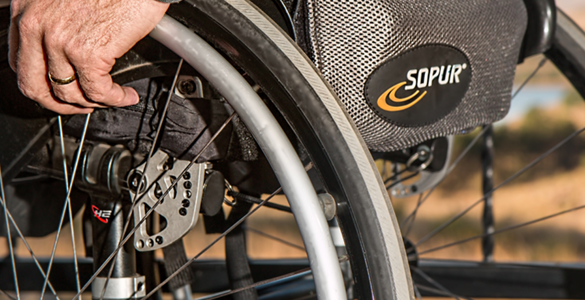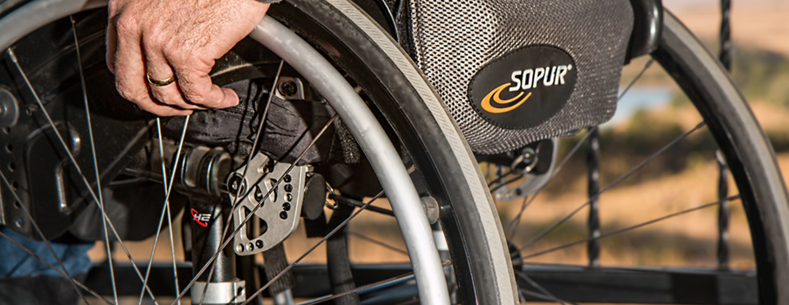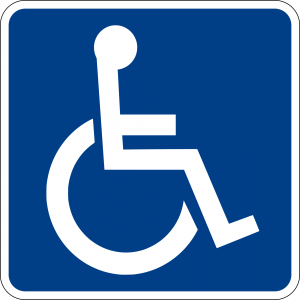Monday 3 December is the International Day of Disabled Persons. The day aims to promote the rights and well-being of people with disabilities, and to increase awareness of the situation of people with disabilities in every aspect of political, social, economic and cultural life.
So, what is the reality for disabled people living in Wales today?
The Equality and Human Rights Commission (EHRC) report, Is Wales Fairer? The State of Equality and Human Rights in 2018, suggests that disabled people are falling further behind their non-disabled peers in terms of education, health, work and living standards.
Education
Early years
Over the period 2015-17, early years attainment was lower for children with Special Educational Needs (57.8% achieved the expected outcome) than those without SEN (96.7%). Approximately a quarter (24.0%) of children with autistic spectrum disorders achieved the expected outcome. Children with severe learning difficulties (5.0%) and children with profound and multiple learning difficulties (6.7%) had the lowest attainment.
The expected outcome at the end of the Foundation Phase is that pupils achieve Outcome 5 or above in ‘Personal and social development, well-being and cultural diversity’, ‘Language, literacy and communication skills – English’ or ‘Language, literacy and communication skills – Welsh’ and ‘Mathematical development’.
Between 2012-14 and 2015-17, children with SEN saw an increase in achievement of 3.7 percentage points, compared to a 1.2 percentage point increase for those without SEN. However, children with some specific conditions saw a fall in attainment:
- Children with physical and medical difficulties (-16.8 percentage points);
- Children with hearing impairments (-26.5 percentage points);
- Children with speech, language and communication difficulties (-9.5 percentage points); and
- Children with behavioural, emotional and social difficulties (-5.6 percentage points).
School-leaving age
The EHRC’s report found that one in five pupils with SEN (20.6%) will achieve five GCSEs at grade A*-C (including English or Welsh first language and mathematics), compared with two-thirds (66.6%) of pupils without SEN.
Attainment was particularly low for pupils with social, emotional and behavioural difficulties (16.6%), speech, language and communications needs (15.6%), general learning difficulties (14.9%), and moderate learning difficulties (9.7%).
Higher education and lifelong learning
In 2016/17, 28.2% of people in Wales aged 25-64 had a degree-level qualification. Within this, 31.6% of non-disabled people had degree-level qualifications compared to 16.6% of disabled people.
According to statistics published by the Welsh Government, of those undertaking apprenticeships in Wales, approximately 700 people stated that they had a disability that affected their ability to learn and/or use facilities. This accounts for 1-2% of people undertaking apprenticeships in Wales.
Health
Good health
Is Wales Fairer noted that non-disabled people reported good health almost twice as frequently (95.5%) as disabled people (51.2%). Those with cancer (30.8%) and mental health difficulties (42.4%) reported good health less frequently than those with physical conditions (56.3%). Disabled children reported good health less frequently (62.0%) than those without disabilities (87.4%).
Mental health
In 2015, disabled people in Wales reported poor mental health nearly three times more frequently (48.0%) than non-disabled people (16.9%). Younger disabled people also reported higher rates of poor mental health than older people, varying between 66.6% (aged 16-24) and 34.4% (aged 75+).
Work
The EHRC found that while the overall employment rate in Wales has risen, it still remains lower than in England and Scotland. The employment rate for non-disabled people (73.4%) was more than twice the rate for disabled people (34.6%) in 2016/17. The unemployment rate for disabled people (8.4%) was twice the rate for non-disabled people (3.9%) in 2016/17. The unemployment rate for non-disabled people fell by 3.0 percentage points between 2013/14 and 2016/17 and by 3.8 percentage points for disabled people.
Median hourly earnings were higher in 2016/17 for non-disabled employees (£10.67) than for disabled employees (£9.72), a disability pay gap of 8.9%.
Non-disabled people (29.2%) were more likely to work in high-pay occupations than disabled people (23.7%) in 2016/17. In contrast, disabled people (33.2%) were more likely than non-disabled people (28.9%) to work in low-pay occupations.
Living standards
Housing
The EHRC published Housing and Disabled People: Wales’s Hidden Crisis in May 2018.
It found that “for too many disabled people… the lack of accessible housing and related support in Wales is a significant barrier to them realising their right to live independently”. The report’s main findings, as summarised in Is Wales Fairer, included that:
- Over half (52%) of local authorities have an accessible housing register, although their data on accessible and adaptable housing are generally poor;
- There remains a severe shortage of accessible and wheelchair-accessible housing to meet increasing demand. The Welsh Government requires new social housing that it directly funds to meet some accessibility and adaptability criteria. However, only one of 22 local authorities set a percentage target for accessible and adaptable housing;
- Installing home adaptations involves unacceptable bureaucracy and delay, and disabled people are often left waiting for long periods of time, even for minor adaptations; and
- Disabled people are not getting the support that they need to live independently as the provision of advice, support and advocacy is patchy, and people report that they have nowhere to turn when their housing is unsuitable. Only 30% of local authorities felt they were meeting the demand for tenancy support.
Poverty
According to the Joseph Rowntree Foundation’s Poverty in Wales 2018, 39% of disabled people are in poverty compared to 22% of non-disabled people. The poverty rate among disabled people in Wales is the highest across the UK.
The poverty rate among people in families that include at least one disabled person is also higher in Wales than elsewhere in the UK. Of those in Wales who live in a family that includes someone who is disabled, 29% are in poverty, compared to 21% of people in Wales in families which do not include a disabled person. In the rest of the UK, between 23% and 26% of people in families which include at least one disabled person are in poverty.
Read more of our articles on equality and human rights issues here.
Article by Megan Jones, National Assembly for Wales Research Service.
Image from Wikimedia Commons by Ltljltlj. Licensed under Creative Commons.







